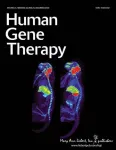(Press-News.org) Boston - A national group of pediatric addiction medicine experts have released newly-established principles of care for young adults with substance use disorder. Led by the Grayken Center for Addiction at Boston Medical Center, the collection of peer-reviewed papers was developed to guide providers on how to treat young adults with substance use disorder given their age-specific needs, as well as elevate national discussions on addressing these challenges more systematically.
Published in Pediatrics, the 11-paper supplement is the result of a convening of national experts in the treatment of young adults to determine the most important principles to address when caring for this unique population of patients with substance use disorder. Consensus was reached that each of the six principles of care "convey a commitment to compassion, therapeutic optimism and social justice."
"Our goal in publishing this supplement is to bring attention to the unique needs and challenges faced by this age group, and highlight the opportunities to best address these needs in order to lead to improved outcomes," said Michael Silverstein, MD, associate chief medical officer for research and population health at Boston Medical Center who served as first and co-author on several papers in the supplement and played a key role in the convening. "We hope that this will start the much-needed dialogue within the medical community about young adult addiction medicine and lead to the development of recommendations and treatment guidelines specific to the needs of these patients."
One of the age groups most heavily impacted by substance use disorders are young adults between the ages of 18 and 25. According to a Substance Abuse and Mental Health Administration report in 2016, 23 percent of young adults reported using illicit drugs, most commonly marijuana and prescription drugs, while two of three adults in treatment for opioid use disorder report that they first tried drugs before the age of 25. Yet, studies have shown that very few young adults identified as needing treatment for a substance use disorder receive it - one in 13 - and of those few in treatment, they are less likely to remain engaged in treatment than older adults.
"There are significant cognitive and developmental changes taking place during young adulthood that need to be considered when determining how best to address substance use disorder in this unique patient population," said Scott Hadland, MD, MPH, MS, pediatric addiction specialist at the Grayken Center who served as first and co-author on several of the papers. "We must incorporate, at every opportunity, a way to reduce harm and consequences of use, and address any compounding health conditions that factor into their ability to realize recovery."
Below is the list of papers about the six principles of care:
1. END
Principles of care established for young adults with substance use disorders
Supplement published in Pediatrics highlights evidence on how best to address this unique age group
2021-01-15
ELSE PRESS RELEASES FROM THIS DATE:
Physicists propose a new theory to explain one dimensional quantum liquids formation
2021-01-15
Liquids are ubiquitous in Nature: from the water that we consume daily to superfluid helium which is a quantum liquid appearing at temperatures as low as only a few degrees above the absolute zero. A common feature of these vastly different liquids is being self-bound in free space in the form of droplets. Understanding from a microscopic perspective how a liquid is formed by adding particles one by one is a significant challenge.
Recently, a new type of quantum droplets has been experimentally observed in ultracold atomic systems. These ones ...
Is your skin thirsty? Optoacoustic sensor measures water content in living tissue
2021-01-15
Researchers from Skoltech and the University of Texas Medical Branch (US) have shown how optoacoustics can be used for monitoring skin water content, a technique which is promising for medical applications such as tissue trauma management and in cosmetology. The paper outlining these results was published in the Journal of Biophotonics.
(swelling caused by fluid accumulation) or dehydration, which can also have cosmetic impacts. Right now, electrical, mechanical and spectroscopic methods can be used to monitor water content in tissues, but there is no accurate and noninvasive technique that would also provide a high resolution and significant probing depth required for potential clinical applications.
Sergei Perkov of the Skoltech Center for Photonics ...
Want a hot stock tip? Avoid this type of investment fund
2021-01-15
COLUMBUS, Ohio - "Buy low and sell high" says the old adage about investing in the stock market.
But a relatively new type of investment fund is luring unsophisticated investors into buying when values are at their highest, resulting in losses almost immediately, a new study has found.
The lure? Buying into trendy investment areas like cannabis, cybersecurity and work-from-home businesses.
"As soon as people buy them, these securities underperform as the hype around them vanishes," said Itzhak Ben-David, co-author of the study and professor of finance at The Ohio State University's Fisher College of Business.
"They appeal to people who are not sophisticated ...
Biodistribution of AAV gene transfer vectors in nonhuman primate
2021-01-15
New Rochelle, NY, January 15, 2021--The biodistribution of adeno-associated virus (AAV) gene transfer vectors can be measured in nonhuman primates using a new method. The method quantifies whole-body and organ-specific AAV capsids from 1 to 72 hours after administration. Study design and results are presented in the peer-reviewed journal Human Gene Therapy. Click here to read the full-text article free on the Human Gene Therapy website through February 15, 2021.
AAV capsids were labeled with I-124 and delivered using two routes of administration: intravenous and directly into the cerebrospinal fluid (CSF). Biodistribution was measured by quantitative positron emission tomography (PET) at 1, 24, 48, and 72 hours after AAV administration. Two AAV vectors - AAVrsh.10 and AAV9 - were compared.
"Following ...
New delivery method promises relief from antipsychotic medication's adverse side effects
2021-01-15
HAMILTON, ON, Jan. 15, 2021 -- A team of neuroscientists and engineers at McMaster University has created a nasal spray to deliver antipsychotic medication directly to the brain instead of having it pass through the body.
The leap in efficiency means patients with schizophrenia, bipolar disorder and other conditions could see their doses of powerful antipsychotic medications cut by as much as three quarters, which is expected to spare them from sometimes-debilitating side effects while also significantly reducing the frequency of required treatment.
The new method delivers medication in a spray that reaches the brain directly through ...
Breathing easier with a better tracheal stent
2021-01-15
Pediatric laryngotracheal stenosis (LTS), a narrowing of the airway in children, is a complex medical condition. While it can be something a child is born with or caused by injury, the condition can result in a life-threatening emergency if untreated.
Treatment, however, is challenging. Depending on the severity, doctors will use a combination of endoscopic techniques, surgical repair, tracheostomy, or deployment of stents to hold the airway open and enable breathing.
While stents are great at holding the airway open and simultaneously allowing the trachea to continue growing, they can move around, ...
Target discovered that halts osteoarthritis-type knee cartilage degeneration
2021-01-15
There is currently no cure for osteoarthritis, but a group of scientists believe they've discovered a method through which a simple knee injection could potentially stop the disease's effects. These researchers showed that they could target a specific protein pathway in mice, put it into overdrive and halt cartilage degeneration over time. Building on that finding, they were able to show that treating mice with surgery-inducedknee cartilage degeneration through the same pathway via the state of the art of nanomedicine could dramatically reduce the cartilage degeneration and knee pain. These findings were published in Science Translational Medicine.
"Our lab is one of the few in the world studying epidermal growth factor receptor (EGFR) ...
Researchers trace geologic origins of Gulf of Mexico 'super basin' success
2021-01-15
The Gulf of Mexico holds huge untapped offshore oil deposits that could help power the U.S. for decades.
The energy super basin's longevity, whose giant offshore fields have reliably supplied consumers with oil and gas since the 1960s, is the result of a remarkable geologic past - a story that began 200 million years ago among the fragments of Pangea, when a narrow, shallow seaway grew into an ocean basin, while around it mountains rose then eroded away.
The processes that shaped the basin also deposited and preserved vast reserves of oil and gas, of which only a fraction has been extracted. Much of the remaining oil lies buried beneath ancient salt layers, just recently illuminated ...
UW researchers develop tool to equitably distribute limited vaccines
2021-01-15
MADISON, Wis. -- The demand for COVID-19 vaccines continues to outpace supply, forcing public health officials to decide who should be first in line for a shot, even among those in the same pool of eligible vaccine recipients.
To assist these efforts, researchers at the University of Wisconsin School of Medicine and Public Health and UW Health have developed a tool that incorporates a person's age and socioeconomic status to prioritize vaccine distribution among people who otherwise share similar risks due to their jobs. The tool helps identify those who are at greater risk of severe ...
NIH scientists identify nutrient that helps prevent bacterial infection
2021-01-15
WHAT:
Scientists studying the body's natural defenses against bacterial infection have identified a nutrient--taurine--that helps the gut recall prior infections and kill invading bacteria, such as Klebsiella pneumoniae (Kpn). The finding, published in the journal Cell by scientists from five institutes of the National Institutes of Health, could aid efforts seeking alternatives to antibiotics.
Scientists know that microbiota--the trillions of beneficial microbes living harmoniously inside our gut--can protect people from bacterial infections, but little is known about how they provide protection. Scientists are studying the microbiota with an eye to finding or enhancing natural treatments to replace antibiotics, which ...
LAST 30 PRESS RELEASES:
University of Oklahoma researcher awarded funding to pursue AI-powered material design
Exploring how the visual system recovers following injury
Support for parents with infants at pediatric check-ups leads to better reading and math skills in elementary school
Kids’ behavioral health is a growing share of family health costs
Day & night: Cancer disrupts the brain’s natural rhythm
COVID-19 vaccination significantly reduces risk to pregnant women and baby
The role of vaccination in maternal and perinatal outcomes associated with COVID-19 in pregnancy
Mayo Clinic smartwatch system helps parents shorten and defuse children's severe tantrums early
Behavioral health spending spikes to 40% of all children’s health expenditures, nearly doubling in a decade
Digital cognitive behavioral treatment for generalized anxiety disorder
Expenditures for pediatric behavioral health care over time and estimated family financial burden
Air conditioning in nursing homes and mortality during extreme heat
The Alps to lose a record number of glaciers in the next decade
What makes a good proton conductor?
New science reporting guide published for journalists in Bulgaria
New international study reveals major survival gaps among children with cancer
New science reporting guide published for journalists in Turkey
Scientists develop a smarter mRNA therapy that knows which cells to target
Neuroanatomy-informed brain–machine hybrid intelligence for robust acoustic target detection
Eight SwRI hydrogen projects funded by ENERGYWERX
The Lundquist Institute and its start-up company Vitalex Biosciences Announces Strategic Advancement of Second-Generation fungal Vaccine VXV-01 through Phase 1 Trials under $40 Million Competitive Con
Fine particles in pollution are associated with early signs of autoimmune disease
Review article | Towards a Global Ground-Based Earth Observatory (GGBEO): Leveraging existing systems and networks
Penn and UMich create world’s smallest programmable, autonomous robots
Cleveland researchers launch first major study to address ‘hidden performance killer’ in athletes
To connect across politics, try saying what you oppose
Modulating key interaction prevents virus from entering cells
Project explores barriers to NHS career progression facing international medical graduates
Jeonbuk National University researchers explore the impact of different seasonings on the flavor perception of Doenjang soup
Two Keck Medicine of USC Hospitals named Leapfrog Top Teaching Hospitals
[Press-News.org] Principles of care established for young adults with substance use disordersSupplement published in Pediatrics highlights evidence on how best to address this unique age group






